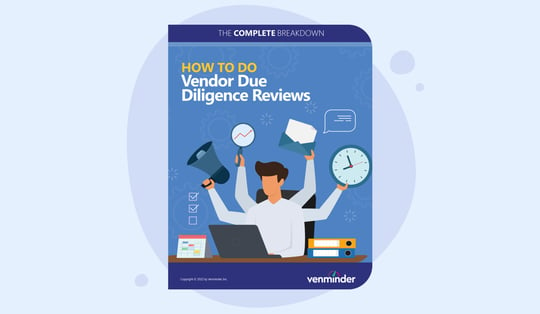Third-party risk management processes can be overwhelming for many small healthcare organizations. The clinical trials process is demanding, as is working to mitigate the risks that could threaten the organization's reputation, production, and patient safety. For these reasons, many sponsoring organizations look to outsource their third-party risk management processes to contract research organizations (CROs).
While the best CROs provide a range of services to fit the healthcare organization's needs, outsourcing to a CRO doesn't remove a sponsoring organization's obligation and accountability for managing vendor risk. That accountability is why third-party due diligence is important for the sponsoring organization and those CROs selected to manage a sponsor's clinical trials.
Sponsoring organizations must ensure that prospective CROs have appropriate and effective processes including robust third-party risk management frameworks and policies. However, it’s up to the CROs to demonstrate rigorous third-party risk management that can make them stand out from their competition.
Vendor Risk Ratings and Due Diligence
Every vendor relationship involves different types and levels of risk, depending on the vendor and the services or products outsourced. The first step to understanding a vendor's risk is identifying and assessing it. Once the risk types and amounts are known, a risk rating or level can be assigned. These risk ratings are typically low, moderate, or high. The level of risk is an important factor for determining what level and type of due diligence is necessary.
For example, a low-risk vendor may only be required to provide basic information. In contrast, a high-risk vendor may be asked to provide extensive SOC reports and details regarding their information security policies. For this reason, it’s important to understand the vendor's level of risk and how it impacts the due diligence process. Remember: the higher the risk, the more rigorous the due diligence should be.
The Importance of Due Diligence for CROs
The process of due diligence involves collecting information about an organization's controls, identifying its inherent risks, and verifying its reputation. Since every vendor relationship involves certain levels and types of risks, it’s crucial to thoroughly evaluate each vendor and their products or services to understand the risks involved.
Performing effective due diligence is essential for identifying potential risks and setting expectations. When vendors access, transmit, process, or store sensitive data or PHI (Protected Health Information), sponsors must ensure they have controls in place to protect that information; this includes CRO vendors. When performing due diligence on their vendors, a CRO must look for weaknesses, vulnerabilities, and risks that the vendor might pose to the sponsor organization and its patients. Identifying these risks is crucial to avoid legal action, fines, and irreparable reputational damages.
During clinical trials, patient safety, privacy, and security are among the top priorities. So, a sponsor organization needs to ensure that the CRO performs robust due diligence on their vendors to protect the trial's integrity and identify any risks before issues arise. CROs that provide thorough due diligence will stand out to sponsors as a worthwhile investment to protect the organization from damages and ensure a healthy vendor relationship.

A Robust Due Diligence Process
During the due diligence process, the CRO may request that the vendor completes a vendor risk questionnaire, which will help develop a better understanding of any potential risks. The CRO should also request a series of documents from the vendor to verify the vendor's reputation , assess controls, and confirm that necessary licenses are up to date.
The documents requested may include:
- Basic information such as the vendor's full legal name, address, and website
- 3 years of audited financial information
- Procedures and policies
- List of subcontractors and fourth parties
- Reputational risk check
- Insurance certificates
- Third-party management policies
- SOC report
- Information security policy
- Compliance
- Biographies of key members of senior management and the organization's owners
The vendor documents and controls should be assessed by subject matter experts in each risk domain. It is common for subject matter experts to possess professional credentials and licenses, making them well suited to evaluate the vendor's control environment.
Although due diligence is a regulatory requirement, it’s also necessary to protect healthcare organizations and their patients from the potentially negative impacts of vendor relationships. Due to the increasing complexity of third-party risk management, smaller organizations may outsource clinical trials (and their associate third-party risk management) to a CRO organization. Sponsoring organizations must carefully vet potential CROs, and CROs seeking to differentiate themselves from their competitors must demonstrate robust processes for managing third-party risks, including risk-based vendor due diligence.






